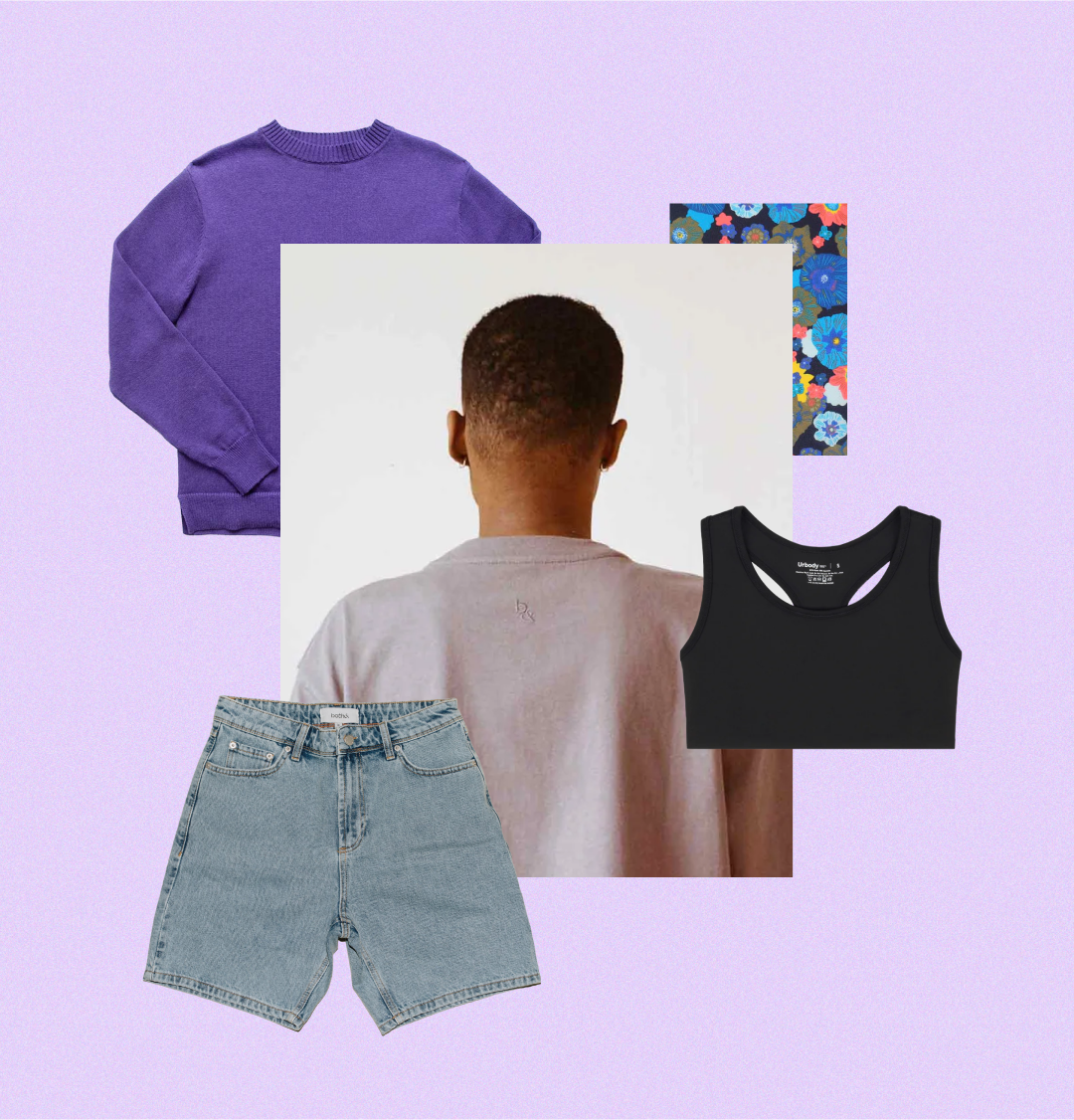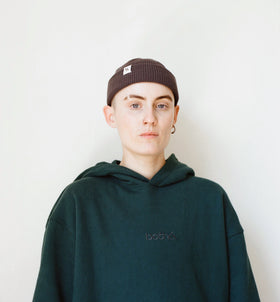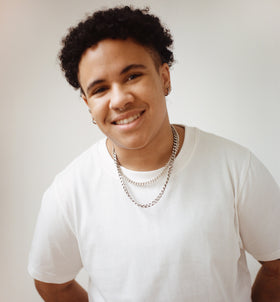
Sep 21, 2023
Top 5 trans apparel brands to watch in 2023
Finnegan Shepard
If you are trans, nonbinary, or gender non conforming, there is a 100% chance that you have thought critically about clothing. Does a shirt fit both your shoulders and your hips in a way that feels good? What colors or patterns signify your identity in a way that feels accurate? Does a particular cut make those around you read you as more masculine or feminine? Through talking with thousands of nonbinary, transmasc, and gender queer people, it has become very clear that these are common questions, and that folks who don’t ‘fit’ into a binary mould share similar struggles when it comes to finding clothing that fits and that feels like an accurate representation of self.
Today, 25% of Gen Z have rejected a binary worldview. That is roughly 650 million people worldwide who don’t fit themselves into the box of ‘male’ or ‘female.’ It is no surprise then that over the last decade, and especially the last five years, we have seen a rise of brands that aim to serve this new audience. In this article, we are going to do three things:
First, we are going to address the three most commonly asked questions within the community when it comes to apparel, fit, style, and gender representation.
Then we are going to do a deep dive on what we believe the top 5 brands in the trans and nonbinary space are, outlining their approaches and what they do best.
Finally, we are going to give you some tips on finding the right gender neutral or gender affirming brand for you.
Let’s dive into it!
Your top questions answered
What is genderless clothing?
Great question. It’s a great question for a few reasons. The first reason is that there isn’t a single answer. If you were to travel across time and space and be dropped into different time periods and cultures, you would find completely different attitudes around how gender maps onto clothing. You would find times where men wore tights and wigs, times where women were predominantly topless. The underlying consistent trend around gender through the ages is that there is no consistency. If you are interested in learning more about this, we recommend a fabulous book called Dress Codes, by Richard Thomson Ford.

The fact that gender has taken so many different forms when it comes to dress makes the question of genderless clothing a very interesting one. Do we mean clothing that ‘can’ be worn by both cisgender men and cisgender women? Do we mean clothing that doesn’t ‘signify’ gender in ways that are mainstream in a particular time period–for instance, the way in which blue was associated with masculinity and pink with femininity in the mid 20th century? Do we mean clothing that fits cisgender male and cisgender female bodies the same way?
In short, there isn’t a single definition of genderless clothing. People interpret it in a variety of ways, sometimes more correlated with the physicality of the garment itself, and sometimes to do with how the garment interacts with ideas and symbolism around gender. This creates a spectrum of language around clothing and gender that includes the terms “gender-neutral”, “gender-fluid”, “nonbinary fashion” and “genderless clothing,” amongst others.
I identify as nonbinary–what clothing can I wear to express my nonbinary identity? What is a nonbinary outfit?
A nonbinary outfit can be literally anything. To identify outside the gender binary is a deeply personal journey, and it looks different for everyone. Some people express their nonbinary identity by pairing ‘traditionally’ male and ‘traditionally’ female kinds of clothing and features together: for instance, pairing baggy jeans with a sports bra for a top, pairing a sequined dress with a beard, or wearing a James Dean style masc outfit but accessorising with long painted nails and dangly earrings. For many people, what is interesting and attractive about nonbinary or gender non conforming identity is precisely the non conformity of it: to break down stereotypes and the ease with which we associate certain objects or articles of clothing with ‘male’ and ‘female’ by juxtaposition or contradiction. One nonbinary person we interviewed said that their gender identity is literally to “make someone do a double take.”
It is also important to note that when brands say they are gender neutral, genderless, or gender affirming, this can mean very different things in terms of their product offering. It all comes back to personal preference and what exactly an individual is seeking in their clothing choices. Are you wanting to communicate identity through slogans or pride flags? Are you wanting to wear something that could fit your body and also the bodies of people with very different gender expressions to you? Do you have a desired silhouette or way that you want to look, and are seeking clothing that creates that shape for you?
What’s the difference between gender-neutral clothing, gender-fluid clothing, and gender-affirming clothing?
Like the prior two questions, there isn’t a singular answer to this and we by no means want to claim expertise or that there even is a singular definition. However, because the three terms are often grouped (unhelpfully) together, we have set forth a working definition for them in this article in the hopes that it can help provide some guidance.
Gender neutral clothing is clothing that aims to be worn by anyone, regardless of the sex they were assigned at birth (and the body proportions that are correlated with secondary sex characteristics and hormones). It tends to be on the baggier side, which increases the likelihood of more people being able to wear it. The pros of this kind of clothing is that it is the most inclusive: it welcomes literally anyone and everyone to wear it. The cons are that because it is made for everyone, it is also in a way made for no one in particular: the fit isn’t made to be very flattering for any specific kind of body.
Gender-fluid clothing. This term has become more prominent in recent years but still doesn’t have a set definition. Many people in the fashion world argue about what exactly it means, and whether it is any different from gender neutral clothing. For the purposes of this article, we are going to refer to gender-fluid clothing as a term that refers more holistically to presentation: it isn’t a singular garment that is gender fluid, but rather the pairing of different garments, accessories, and other means of self-presentation that creates an appearance commonly read as gender fluid.
Gender affirming clothing is clothing that addresses the needs and wants of gender more specifically. This can apply to functional wear, such as binders (which address the desire for AFAB, masc presenting people to have a flat chest), the gaff (which addresses the desire for AMAB femme presenting people to be able to comfortably and effectively tuck), as well as clothing made by companies like Both& Apparel that have specifically altered the proportions of clothing to create the desired fit and silhouette for transmasc and nonbinary people. In this model, clothing or functional wear is designed to meet a specific need and deliver a specific outcome.
Now that we have given brief answers to the top three questions we get asked, we are going to do an analysis of the top five genderless, gender-neutral, and gender affirming brands to look for in 2023.
Urbodyco

Urbodyco is a “brand for the human being” that creates high quality functional essentials. Known for their compression shorts and tops and their clean, welcoming aesthetic, Urbodyco falls into the category of gender affirming clothing. They serve nonbinary, trans, and gender non conforming consumers.
Go to Urbodyco for: gender affirming undergarments (binders, gaffs, compression shorts) that help gender diverse folks feel good.
Kirrin Finch

Kirrin Finch has been around since 2015, making ‘masculine inspired clothing,’ with a speciality in formalwear. They use high quality fabrics to make dress shirts, suits, and slacks that are very popular in the lesbian, queer, and gender non conforming communities.
Go to Kirrin Finch for: masculine dress wear that will fit AFAB bodies.
Pacsun

Pacsun is one of the major brands that have tried to wade into the gender neutral or genderless clothing space. While we don’t necessarily recommend their collection, we feel it is worth noting one of the major brands that is making moves in this space. Pacsun launched a ‘unisex’ collection called the ‘gender-free shop’ that contains predominantly boxy basics modelled by cisgender women and men. They fit into the category of gender neutral, in the sense that the clothing is made baggier, with less attention to creating a specific fit or shape on a specific body type.
Go to Pacsun for: baggy basics that bill themselves as gender neutral. Please note that unlike the other companies listed here, this is not a trans/queer owned and run company.
IJJI

Ijji is a genderless clothing label that focuses on slow fashion, with bespoke, high quality garments. It is named after a Japanese word that means ‘any loose fitting drawstring pant.’ Ijji fits into both the category of gender neutral, in the sense that it creates boxier fits that are made with the intention to work on both men and women, and also in the gender fluid category, in the sense that the clothing is clearly meant to be paired with a wide spectrum of other clothing.
Go to Ijji for: high quality fabrics in boxier fits for the classic, Japanese unisex style.
Both&

Both& is the first company to build a new fit and sizing system for people who were assigned female at birth and specifically want a more masculine silhouette in their clothing. They have altered the proportions of their clothing to solve the biggest complaints in the transmasc community to create a fit that emphasizes muscle, minimizes cling, and comes in the right proportions of length to width.
Go to Both& for: high quality, long lasting garments that create a masculine silhouette for anyone who is AFAB and masc of center.
So, how should you choose the right brand for you?
In short, it will depend on what your goals are, and what gender joy looks like to you. Do you want a shirt with a trans pride flag on it? Do you want functional wear that helps shape your body in a way that minimizes dysphoria? Do you want a baggy fit, or do you want a fit that is based specifically around the shape of your body and your desired silhouette? Ultimately it’s up to you, and we encourage you to check out all of the brands we’ve listed above to figure out what the right choice is for you.
Where do we go from here?
If it’s not obvious from above, let’s state the obvious here: call it gender free, call it gender neutral, call it gender fluid, call it gender affirming–whatever you call it, the movement away from a binary understanding of gender in fashion is the way of the future. Younger generations do not subscribe to a binary reading of the world: it is not either/or, but both and. As this paradigm shift in thinking takes over the globe, the ways that we express ourselves linguistically, aesthetically, philosophically, and inter-personally will change.
Fashion will play a significant role in this. It’s easy to think of fashion as shallow, as a surface level industry, but that’s not really true. Clothing is one of the most powerful tools of translation that we have. It is a way for us to present who we are to the world, and for the world to respond to us in a way that makes us feel seen for who we really are. As we continue to challenge, play with, and reinvent ideas around gender, fashion will naturally follow suit, giving us tools to utilize in our ever-evolving journey of self understanding and expression.
While many brands are entering this space, we highly recommend that you look at Urbodyco (for functional wear), Kirrin Finch (for formalwear), Pacsun (for baggy, gender-neutral outfits), IJJI (for high quality, gender neutral wear), and Both& (for gender specific, affirming wear).
Please let us know in the comments below which of these brands are your favorite and why, and don’t forget to share this article with any friends or family who could find value in it!
Have fun out there, we’re rooting for you :)
Some Final FAQs from the Community
What are the unique challenges these brands face in the fashion industry, and how do they overcome them?
Creating and marketing apparel specifically designed for trans, nonbinary, and gender non-conforming individuals presents unique challenges, such as addressing a wide range of body types and gender expressions, overcoming societal biases, and educating the market. The article touches on the niche these brands fill but does not delve into the specific hurdles they face, such as production challenges, market education, and battling societal norms and stigma. Overcoming these challenges might involve innovative design and fitting processes, targeted marketing strategies, community engagement, and advocacy work. Understanding these aspects can provide readers with a more in-depth view of the brand's values and commitments beyond just the products they sell.
How do the prices and accessibility of these brands compare with mainstream clothing brands?
The article highlights different brands serving the trans, nonbinary, and gender non-conforming communities but doesn't delve into the affordability and accessibility of these brands. Often, specialized clothing can be more expensive due to the niche market, smaller production runs, and the additional research and development that goes into creating garments that cater to specific needs. However, the actual price range and accessibility, such as international shipping options or availability in physical stores, can vary significantly between brands. Generally, brands like Pacsun might offer more affordable options due to their larger scale of production and distribution, while smaller, specialized brands like Both& might be pricier due to the reasons mentioned above. Accessibility extends beyond price and includes factors like size range, return policies, and the inclusivity of marketing efforts.




